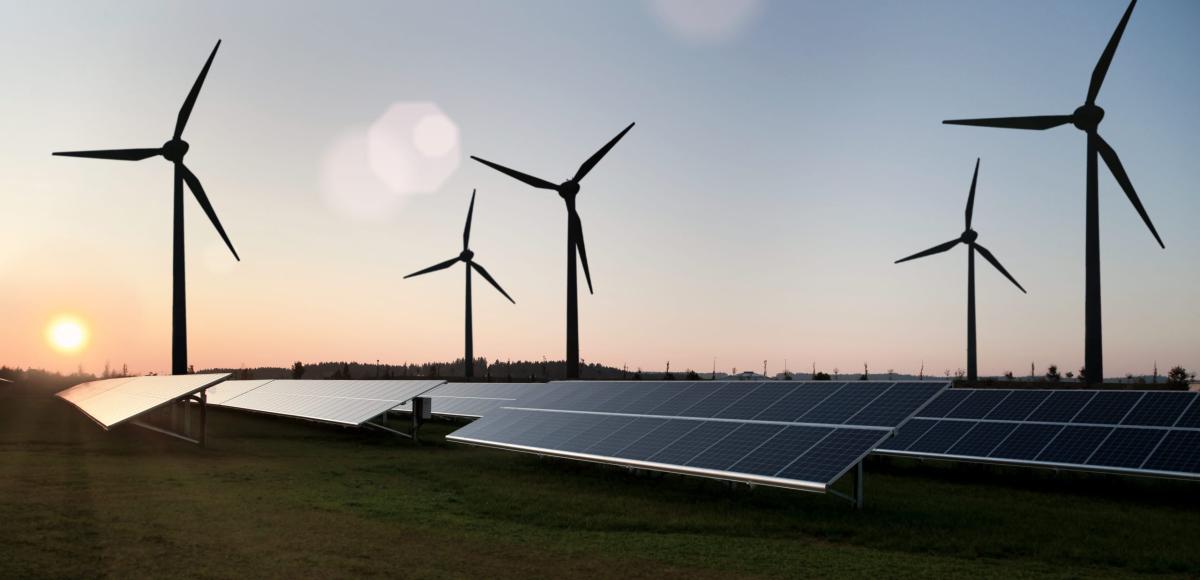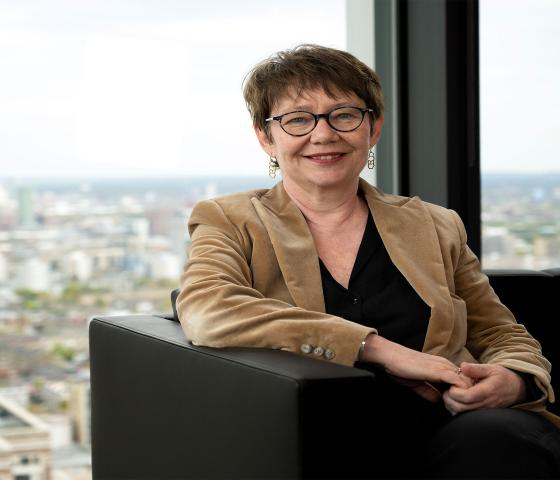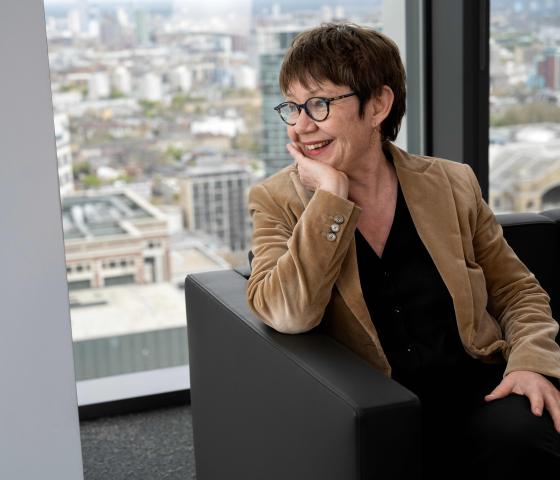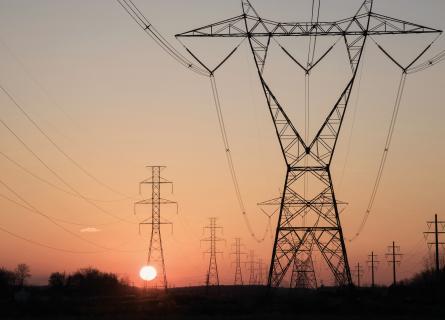
Catalysing systematic change
Stopping climate change is one, if not the one, prerequisite for future life on this Earth of ours. An unsolvable task for just one nation or organisation alone, thinks Odile Renaud-Basso, the President of the European Bank for Reconstruction and Development (EBRD).
Your actions show you are a tireless fighter against global climate change, calling for strategies, funding and partnerships. How specifically are you working with the EBRD towards this goal?
At the EBRD we recognise that the climate crisis is the challenge of our time. The transition to a zero-carbon world requires trillions in investment, the bulk of which needs to come from the private sector, as public funds are insufficient.
Multilateral development banks, like the EBRD, have a key role to play, because we catalyse systemic change. We support countries where we operate, enabling regulatory environments for climate-friendly investments, for instance by structuring renewable energy auction mechanisms, seeking to promote carbon market schemes and developing low-carbon pathways that signal to project developers and investors new climate investment opportunities. We also channel funding from the developed world to developing countries and emerging markets – for example, donor funding from bilateral donors and global climate funds. We believe in private sector-driven growth; hence we work to incentivise private sector action. We also make major investments – for instance, financing the first wind farms in Kazakhstan or the first competitively tendered utility scale solar plant in Albania.
Last year, 50% of our total business volume (more than €6 billion) was invested in the green economy – the largest ever amount of green financing by the EBRD. This is part of our commitment to ensuring that at least half of our annual business volume is green by 2025.
We have also aligned all our activities with the objectives of the Paris agreement. This means that all EBRD investments are screened for their alignment with the mitigation and adaptation goals of the Paris Agreement. Beyond investments, the EBRD’s Paris alignment approach covers all internal operations – ranging from treasury to mobility. To support our clients in their Paris alignment efforts, we launched the Corporate Climate Governance Facility. With the EBRD’s support, our clients develop transition plans to address governance gaps, identify priority green investments, and raise capital for green investments. The Facility engages with clients in agribusiness, manufacturing and services, and the financial sector. We recognise that climate solutions are dispersed, diverse and intertwined across the whole economy. No single organisation on its own can deliver the full suite of climate investments. By co-financing with other multilateral development banks and investors, and by working with policy makers, donors, and technology providers, we leverage our capital and deliver climate solutions that are greater than the sum of the parts.
Looking forward, the range of new, climate-friendly solutions is wide – across hydrogen, renewable power, biomass, energy efficiency to name a few. Where do you see the most promising investment areas, and why?
There is not just one promising investment area. We need to transition the entire economy – from our energy systems to industry and the agribusiness sector – and this requires climate investments and changes in business practices across all sectors. In fact, the transition to a zero-carbon world entails enormous business opportunities.
For example, we need to electrify whenever and wherever we can to drive our cars, heat our homes and run our industries. This electricity must come from renewable energy sources. Keeping the world on track towards an energy transition in line with the 1.5-degree goal requires annual renewable energy investments of USD 5 trillion between 2023 and 2030.
Since 2006, we invested close to EUR 11 billion in renewable energy and provided technical and policy support to mobilise billions more. In some of our countries, we are the largest financier of renewable energy and oftentimes we are one of the first as well. For example, we financed the first utility scale solar power plant in Albania last year with co-financing from private banks and other MDBs. We also supported the government with setting up the first competitive auction for solar power. Such investments and policy engagements build a replicable model for other countries in the region.
That said, certain activities – mainly in heavy industry – cannot be electrified. In such cases low-carbon fuels, like renewable hydrogen, can be the solution. We need to bring the regulators and the private sector together to build hydrogen strategies, regulations and market frameworks that provide long-term clarity to investors because the technology is still in its early stages. For example, in Egypt, we supported the development of the National Hydrogen Strategy and signed an investment for the first green ammonia production plant in 2022. Laying the regulatory groundwork and providing financing for the early investments, we are confident that we will create the right conditions to crowd in the private sector.
We should not forget about the low-hanging fruits. For example, energy efficiency projects in the SME sector. We support such investments through our Green Economy Financing Facilities, which channel funding to small and medium sized businesses and households via more than 180 partner financial institutions. Since 2006, we have committed €6 billion to investments under GEFFs, avoiding almost 10 million tonnes of CO2 emissions per year. This model increases access to climate finance at the local level and enhances the competitiveness of small and medium sized businesses.

In addition to decarbonising the whole economy, we need to invest in adaptation and climate resilience. Unfortunately, adaptation finance has historically lagged behind mitigation finance. The best way to scale adaptation investments is to structure all investments to support the climate resilience of our clients. For example, we are providing a EUR 210 million loan for the construction of a new section of the Corridor Vc Motorway in Bosnia and Herzegovina. While the primary focus is road construction, the project will actively incorporate adaptation elements to improve the resilience against physical impacts of climate change – such as strengthening embankments. I brought forward these sectors as examples. We can also talk about buildings, manufacturing, the financial sector, the list goes on. The transition to net-zero is an economy-wide effort.
How do you evaluate potential green energy investments, and what criteria do you use to determine whether an investment or project is a good fit for EBRD?
Similar to any commercial financial institution, we apply sound banking principles, consider environmental and social safeguards, and evaluate climate-related financial risks. In addition to these industry standards, all our activities – including our investments - are aligned with the objectives of the Paris agreement. This means every EBRD transaction must be consistent with a 1.5-degree pathway and support the climate resiliency of our partners. We developed the methodology for this jointly with the other MDBs and are already seeing other banks working to implement it.
While all our investments are aligned with the objectives of the Paris agreement, not all of them will necessarily be classified as green or climate projects. You will find that some projects, for example in the healthcare sector, are consistent with a 1.5-degree pathway, yet they do not show any significant climate benefits – hence, they are not considered as green or climate investments. We use the MDB climate finance tracking methodology to assess whether an investment is a climate or green investment and we report our green finance in the annual Joint Report on MDB Climate Finance.
Standards and methodologies to track climate finance and Paris aligned financial flows are important for consistency, comparability, and transparency. We developed these methodologies jointly with the other MDBs as we could not rely on existing standards and methodologies. Having said that, we appreciate seeing that they are being picked up and adjusted by other institutions.
Both the EU, the US and other regions are strengthening their policy framework and instruments to drive green transition. how do you assess the impact of government policies and regulation of the energy sector?
In our countries of operation, as in many others, the absence of a carbon price is a fundamental market failure. The introduction of a carbon price reduces externalities and makes many green projects economically viable. In Kazakhstan we supported the authorities in establishing an emissions trading scheme. This will take time to generate a strong economic signal, but we have seen with the EU Emissions Trading Scheme how once established this can prompt significant private investment throughout an economy.
In the absence of a carbon price, political commitments at the national level and sectoral regulations that create a climate-friendly market environment are ever so important. At the national level, we work with our countries to develop ambitious nationally determined contributions and long-term strategies. At the sectoral level, we bring together regulatory and industry stakeholders to design low-carbon pathways in sectors such as power, fertiliser, cement, steel, and transport. This policy work provides strong signals to project developers and investors on sectoral investment needs and the timeline to deploy new technologies. The bottom line is that the right regulations attract private sector investments. That is why we place such an emphasis on our policy dialogue. In many of our countries the market for green energy is still nascent and we continue to work hard to bring the regulators and the private sector together.
With war in Europe, a more accentuated geopolitical situation and disrupted supply chains post the pandemic, the path towards more climate-friendly solutions seems even more challenging. What implications does this development have on EBRD’s strategic thinking and your investments?
If anything, Russia's war on Ukraine has highlighted the urgent need to diversify gas supply and transition away from fossil fuels and coal. Green and renewable energy have become recognised as key to achieving this. We see this not only through new policies, which aim to support clean energy and low-carbon technologies (such as the EU's Green Deal Industrial Plan and the US’s Inflation Reduction Act), but in our countries of operations as well. For example, Egypt has launched a groundbreaking Nexus on Water, Food and Energy (NWFE), part of the country’s national climate change strategy.
The EBRD is the lead development partner on NWFE’s energy pillar, which should unlock $10 billion in private investment to install 10 GW of solar and wind energy and double Egypt’s share of renewable energy by 2028.
Uzbekistan is another example of a country where EBRD is supporting the government’s ambitious objectives to develop 12 GW of renewables by 2030 through policy work and investments. In the last twelve months, the EBRD financed 2.4 GW of new renewables capacity to be developed in Uzbekistan and continues to support the country on auctioning of 2 GW of renewables capacity.
This issue of AFRY Insights magazine revolves around the challenging dual objective of balancing between decarbonisation and security of energy supply. What does this bring to mind for you, within the context of your expertise?
I believe there is no longer any tension between these two. There is a growing realisation that decarbonisation is key to energy security. An energy system powered by domestically generated clean energy sources is less dependent on fossil fuels, and thus less vulnerable to external pressures.
What advice would you give to someone looking to invest in green energy, and what resources or strategies do you recommend for those who are just getting started in this field?
I recommend being well versed in the various standards and regulations around green products. For example, when it comes to green bonds, an understanding of the Green Bond Principles will allow one to invest in financial products more confidently with green benefits. Similarly, for those looking to get involved with carbon markets, understanding how carbon credits are issued and standards like the Gold Standard will help make more informed decisions. For those investing in the European markets, the EU Taxonomy for Sustainable Activities is crucial.



